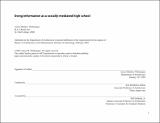| dc.contributor.advisor | Ann Pendleton-Jullian. | en_US |
| dc.contributor.author | Wittkamper, Aaron Matthew, 1977- | en_US |
| dc.contributor.other | Massachusetts Institute of Technology. Dept. of Architecture. | en_US |
| dc.date.accessioned | 2005-09-26T15:55:22Z | |
| dc.date.available | 2005-09-26T15:55:22Z | |
| dc.date.copyright | 2005 | en_US |
| dc.date.issued | 2005 | en_US |
| dc.identifier.uri | http://hdl.handle.net/1721.1/27872 | |
| dc.description | Thesis (M. Arch.)--Massachusetts Institute of Technology, Dept. of Architecture, 2005. | en_US |
| dc.description | This electronic version was submitted by the student author. The certified thesis is available in the Institute Archives and Special Collections. | en_US |
| dc.description | Some pages folded. Page 122 blank. | en_US |
| dc.description | Includes bibliographical references (p. 89-90). | en_US |
| dc.description.abstract | (cont.) In this blurred area, a project/group-based curriculum can be developed to involve casual work areas that can fluctuate in size, based on the specifications of the project. Through the cultivation of this type of environment, the social energies of the students can begin to infect the rigid aspects of education in a positive way, thus creating an environment that is a mediated cross-fertilization of the social and the academic. The end goal is an involved type of learning that feeds off of the irrepressible social energies of the high school student. | en_US |
| dc.description.abstract | "The present epoch will perhaps be above all other epochs of space. We are in an epoch of simultaneity: We are in an epoch of juxtaposition, the epoch of near and far, of the side by side, of the dispersed. We are at a moment I believe, when our experience of the world is less that of a long life developing through time than that of a network that connects points and intersections with its own skin." -Michel Foucault' Social Network Theory suggests that aspects of quantum systems can effectively describe a constantly evolving invisible web of live information that is entirely contingent upon the varying degrees of trust and social interaction among a defined group of people. Despite traditional assumptions about social structure, order, and hierarchical systems, a vast web of tacit knowledge (i.e. embodied, living information) evolves within a group of people, entirely due to naturally informal social interactions. When placed within the socially charged realm of the high school, this premise suggests that significant moves can be made in the design of a school (both in physical form and curricular format) in order to positively engage (rather than suppress) an educational program with the enduring social tendencies of a student body. My thesis proposes a high school with a distinct spatial layout that mediates between the student body's inherent manner of socially constructing information among peers, and the curriculum's way of academically propagating knowledge. The design incorporates a layering of densely programmed spaces that reveal void conditions or between spaces that are free to be programmed in a variety ways, thus providing opportunities to blur the often strict boundary between social space and academic space. | en_US |
| dc.description.statementofresponsibility | Aaron Matthew Wittkamper. | en_US |
| dc.format.extent | 122 p. | en_US |
| dc.format.extent | 48552797 bytes | |
| dc.format.extent | 48624041 bytes | |
| dc.format.mimetype | application/pdf | |
| dc.format.mimetype | application/pdf | |
| dc.language.iso | en_US | |
| dc.publisher | Massachusetts Institute of Technology | en_US |
| dc.rights | M.I.T. theses are protected by copyright. They may be viewed from this source for any purpose, but reproduction or distribution in any format is prohibited without written permission. See provided URL for inquiries about permission. | en_US |
| dc.rights.uri | http://dspace.mit.edu/handle/1721.1/7582 | |
| dc.subject | Architecture. | en_US |
| dc.title | Living information as a socially-mediated high school | en_US |
| dc.type | Thesis | en_US |
| dc.description.degree | M.Arch. | en_US |
| dc.contributor.department | Massachusetts Institute of Technology. Department of Architecture | |
| dc.identifier.oclc | 60804201 | en_US |
